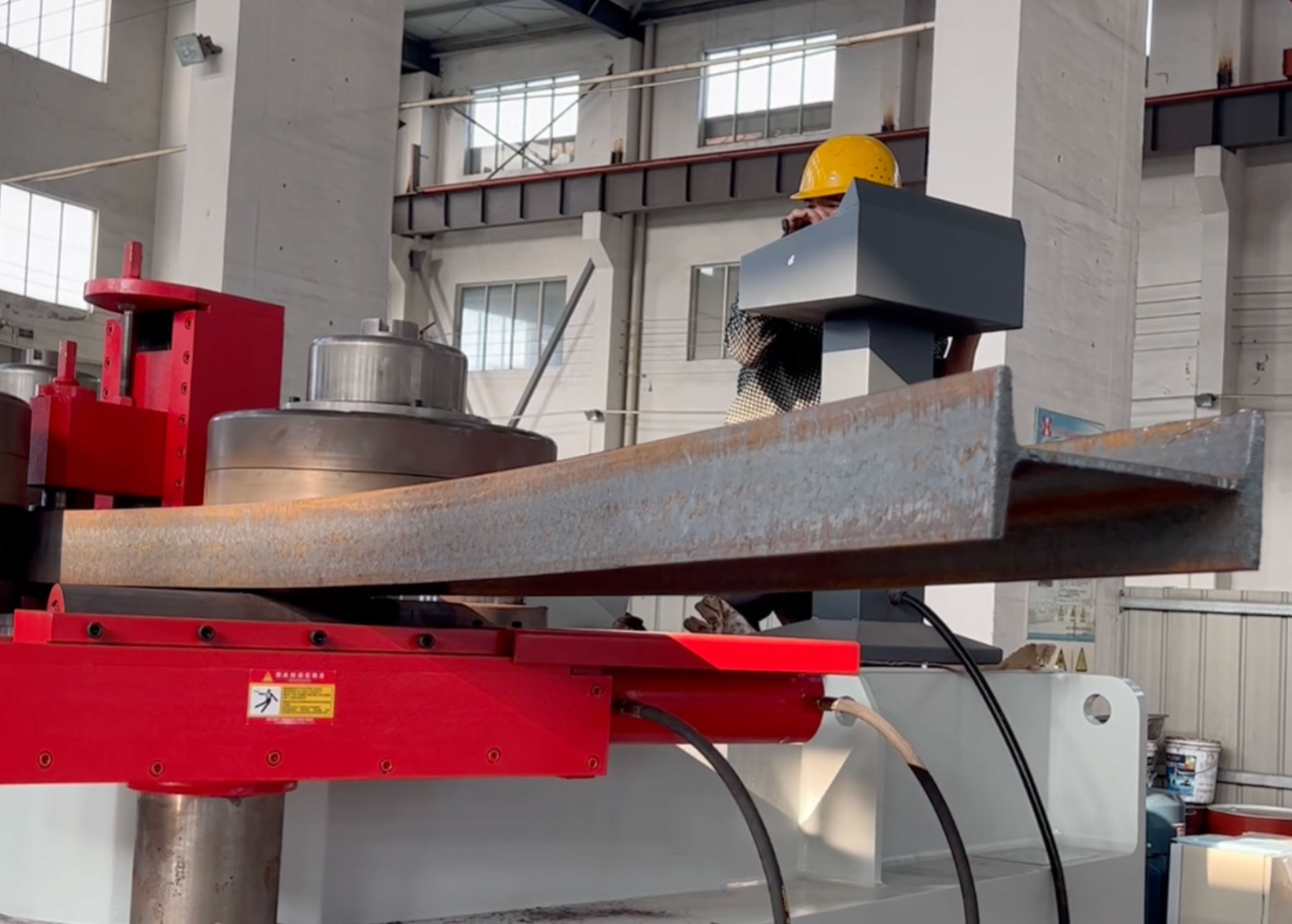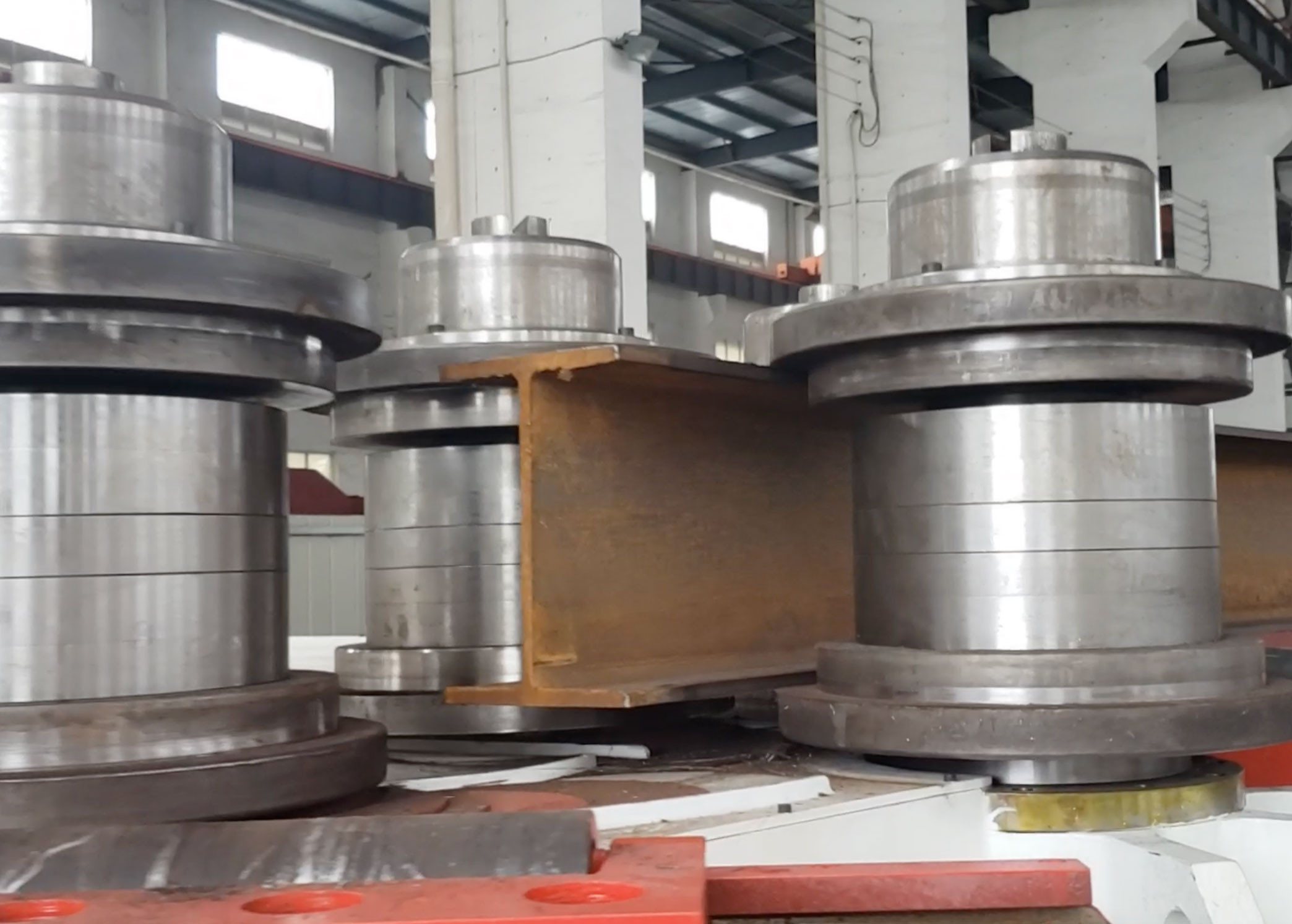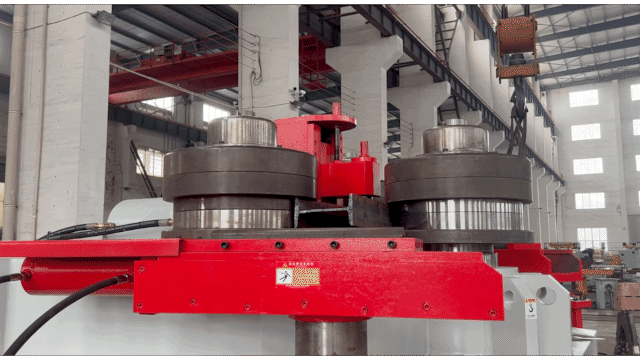Beam rolling is a specific process within the broader category of bending beams. It typically involves rolling steel beam structures into precise shapes for architectural or structural applications.y means roll bending steel beam structures into specific shapes for architectural or structural applications.
What is Beam Roll Bending?
Beam rolling is a specialized metal forming process that uses roll bending to shape steel or structural beams into precise curves. This technique is essential in architectural and structural applications, ensuring beams achieve the required curvature while maintaining strength and load-bearing capacity. Roll bending gradually forms the beam without compromising its integrity, making it ideal for large-scale and precision-engineered projects.
Types of Beam Rolling(Curved Beams)
Curved beam rolling (also called profile rolling) involves passing the beam through rollers that apply pressure to bend it into curves or arches, either to form a specific radius or to create custom shapes.
The roll bending of the beam in theory includes the following beam structural components:
- I-Beams (H-Beams and S-Beams) Rolling: These beams have a cross-section shaped like the letter “I” or “H” and are used for heavy structural support in construction.
- Channel Beams Rolling: C-shaped beams that are used in various structural and framing applications.
- T-Beams Rolling: T-Beams like a “T,” these beams are used where additional strength is needed in certain areas.
- Angle Beams Rolling, Angle Beams are “L” shaped beams used in lighter structural support or framing.
But in steel profile bending workshop, beam rolling bending usually refers to H or I-Beam Roll Bending.
Beam Rolling Process


Beam Rolling Machine
Beam rolling is a specialized metal forming process that uses a Profile Bending Machine(also called Section Bender) to shape steel or structural beams into precise curves. This process relies on a three-roll bending system, where two side rollers and a central roller apply gradual pressure to achieve the desired curvature. Similar to plate rolling but adapted for rigid structural profiles, it ensures beams retain their strength and load-bearing capacity.
The beam rolling machine can perform both single-pass bending (where the profile is bent in one time go) and multi-pass bending (where the profile is bent incrementally through multiple times passes). Typically, heavy steel beams require multiple roll-bending forming operations to achieve the desired shape and can rarely be formed in one operation.
Beam Rolling Process
- Place the beam between the rollers.
- Adjust the roller positions based on the desired curvature.
- Gradually bend the beam as the rollers apply force, repeating passes for complex or tight bends.
For beams with more complex curves, multiple passes may be required. The beam might be rolled in small increments, gradually increasing the curve in stages, allowing for better control and precision.
Some beams may also undergo additional processes (e.g., straightening or fine adjustments) after the rolling process to achieve the exact specifications.
Beam rolling uses two primary methods:
- Easy Way (Y-Axis Bending): Bends the beam along its weaker axis.
- Hard Way (X-Axis Bending): Bends the beam along its stronger axis, requiring more force.
Easy Way (Y-Axis Bending)
Easy way bending refers to bending a beam about its weak axis, typically the Y-axis, which is perpendicular to the web (the vertical part of an I-beam) and parallel to the flange.
In this orientation, the beam has greater flexibility and is easier to bend since it resists deformation less in this direction.
For an I-beam, the Y-axis is the axis through the height of the beam (the vertical section).
Typical application: When you want to create a gentle curve or perform lighter bending for decorative or less load-intensive applications.
Example: For an I-beam standing upright, bending along the Y-axis would cause the beam to curve along its height (vertical part).
Hard Way (X-Axis Bending)
A hydraulic pulling system for H, and I beam (X axis) bending is required.

Hard way bending refers to bending a beam about its strong axis, typically the X-axis, which aligns with the width of the beam (the horizontal part of the I-beam).
Bending in this direction challenges the material more because it resists deformation along the X-axis. This axis resists bending and deflection the most, making the beam more rigid and harder to bend.
For an I-beam, the X-axis runs horizontally, passes through the web, and parallels the flanges (the top and bottom horizontal parts of the I-beam).
Typical application: Hard way bending is used when a beam needs to withstand higher loads, and the structure needs to maintain its strength. Example: For an I-beam, bending along the X-axis would cause the beam to curve along the flange (horizontal part).
Profile Bending Machines for I Beam bending can be configured to have additional Pulling Apparatus on the outside flange of the beam rolled the hard way. Roll bending I Beam with hard way must balance the compressive forces of the main three rolls with the tension supplied by the rolls pulling on the flange to keep the web from distorting as the beam is curved.
Curved Arc Types of Beam Rolling
- Single Radius Rolling: This is the most common type of beam rolling, where the beam is bent to a single, consistent curve or radius. This is typically used for architectural arches, bridges, or other applications where a simple, uniform curve is required.
- Double Radius Rolling: This type of rolling involves two different radii in the same beam, creating an arch with both a tight and a wider curve. This is often used in bridge construction or when a beam needs to fit into a structure that requires varying curvature at different points.
- Variable Radius Rolling: In some cases, the curvature changes along the length of the beam, requiring varying levels of force and adjustments to the rollers. This method is often used for complex architectural designs or specific structural needs.
Quality Requirements: Maintain strict tolerances for flange width, web height, and thickness while ensuring a consistent radius and curvature throughout the beam. Prevent twisting, warping, or asymmetric deformations, and minimize internal stresses or cracks to preserve structural integrity. Deliver uniform quality across all beams in batch production for reliable performance.
- 👉 Steel Beam Weight Calculator Get accurate weight estimations before choosing the right bending machine.
- 👉 I-Beam & H-Beam Section Modulus Calculator Calculate the bending resistance of your structural beam before forming.
- 👉 Angle Profile Bending Also interested in lighter sections like angles? Check angle rolling solutions.